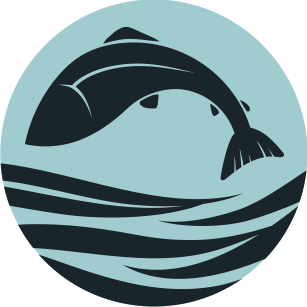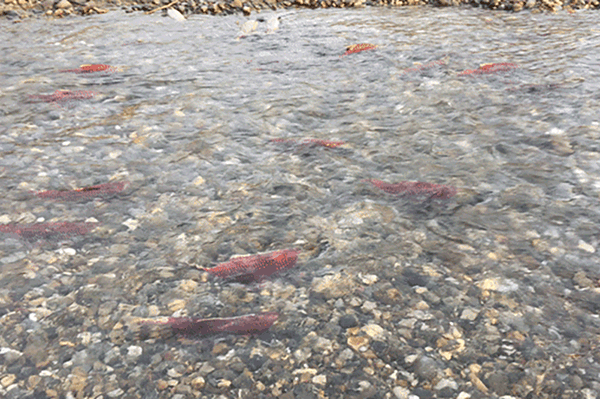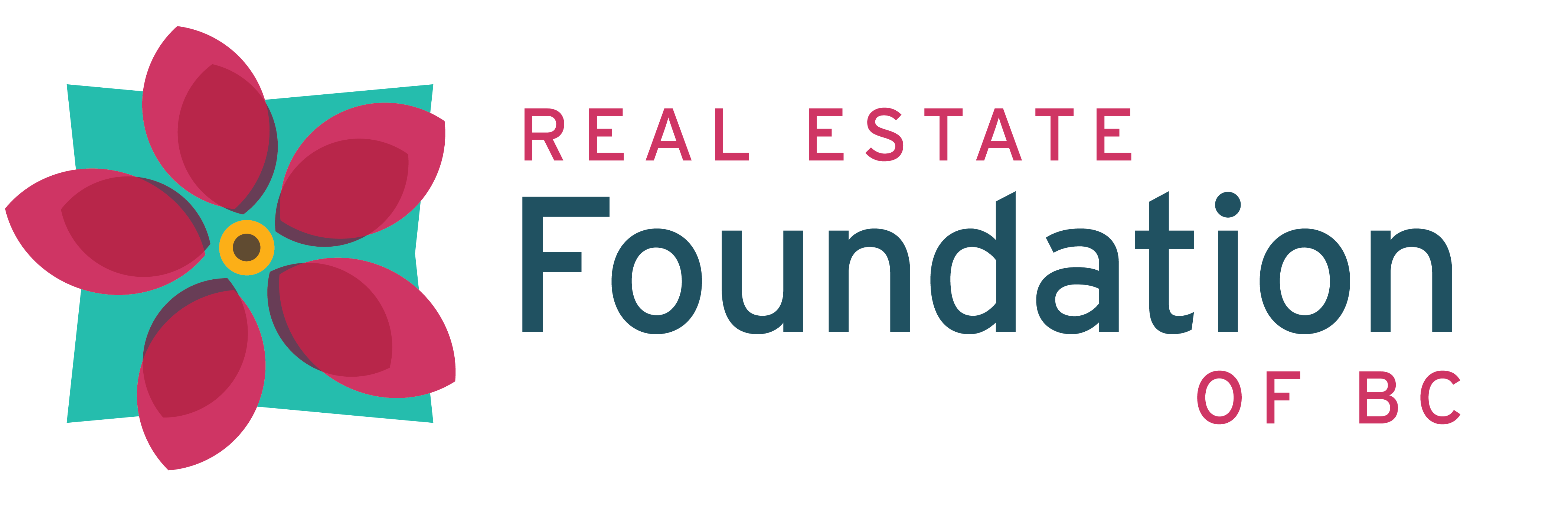What are ‘Fish-Friendly Flows’?
One of the Healthy Watersheds Initiative’s funding priority areas is Fish Friendly Flows, supporting seven projects totalling $1,337,000 in grants. So, what exactly does this mean, and what type of work are these water stewards doing to help salmon and other species in B.C.?
If you live in British Columbia, you’re probably familiar with the impressive feats of salmon runs. Adult salmon migrate from the ocean to the same rivers they hatched to spawn the next generation.
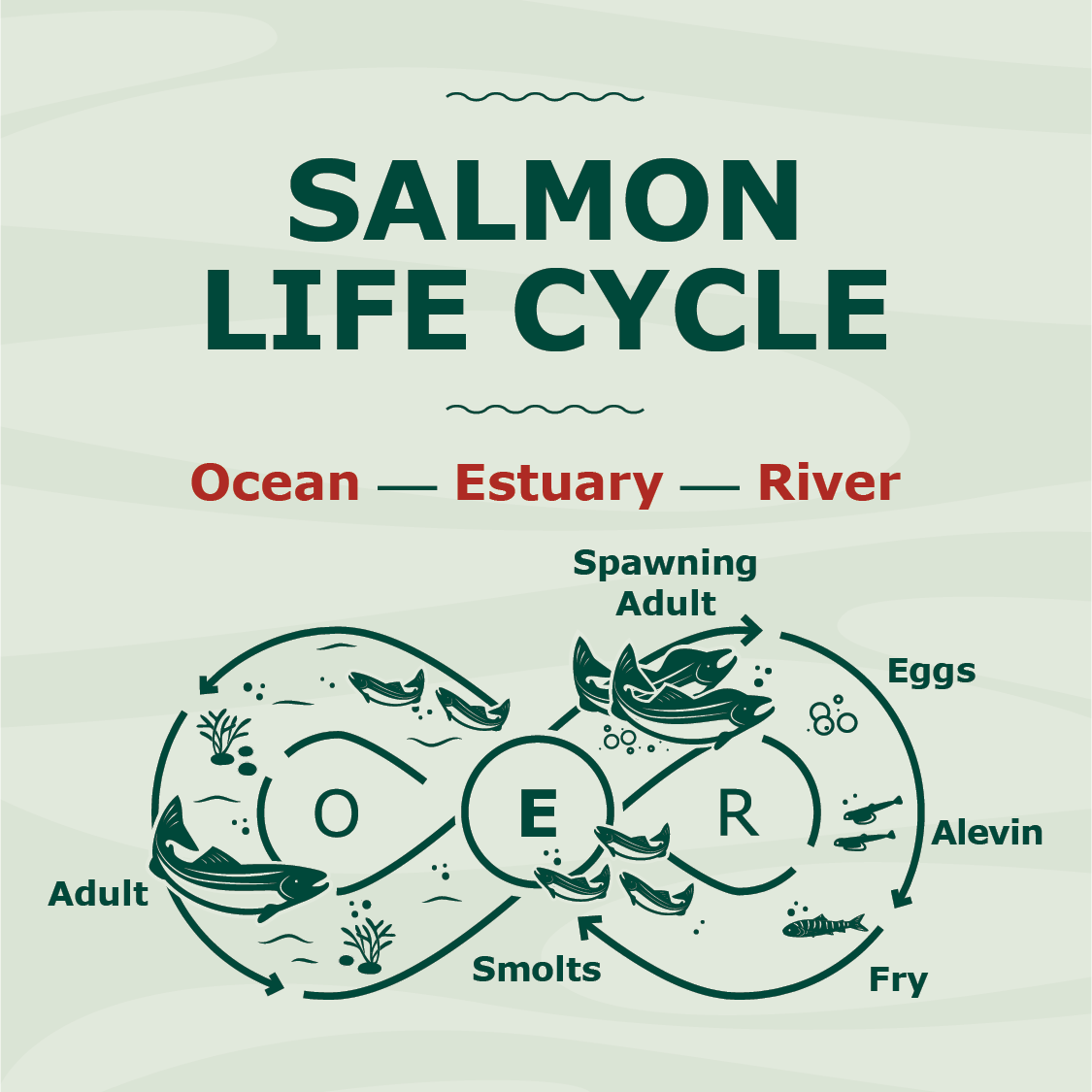
Salmon lifecycle, source: Watershed Watch Salmon Society
Salmon are anadromous fish — fish that hatch and spend their early years in fresh water, travel to salt water as adults, and then return to spawn and die in fresh water. Their remarkable ability to find and return to the lake or stream where they were born to spawn has fascinated scientists for decades. Many now believe that salmon can navigate using the earth’s magnetic field as a compass.
Since time immemorial, salmon migration has sustained First Nation communities, provided food for bears, marine mammals, and other animals, and helped cycle nutrients in fresh water ecosystems. One Pacific Northwest study found that at least 137 wildlife species are predators or scavengers of salmon at one stage in their lifecycle – that’s a lot of species! An abundance of salmon is important for food security, climate security and ecosystem function.
But as many of us are all too aware, salmon and other fish species face significant threats. To succeed on their journey, they must overcome increasing numbers of human-caused barriers and impacts to their ecosystems. Disturbances to fish habitat include “press disturbances” where physical development infrastructure impedes migration and “pulse disturbances” where pollutants, sediment, debris and other hazardous materials are ‘pulsed’ into the water.
In some watersheds, fish face both physical barriers and water-borne contaminants, resulting in a cumulative effect that puts them at even greater risk. In other situations, like what we are collectively witnessing with recent massive scale flooding and extreme climate events in the Lower Mainland and Southern Interior parts of the province, weather events caused or exacerbated by human-induced climate change can result in both pulse and press disturbances.
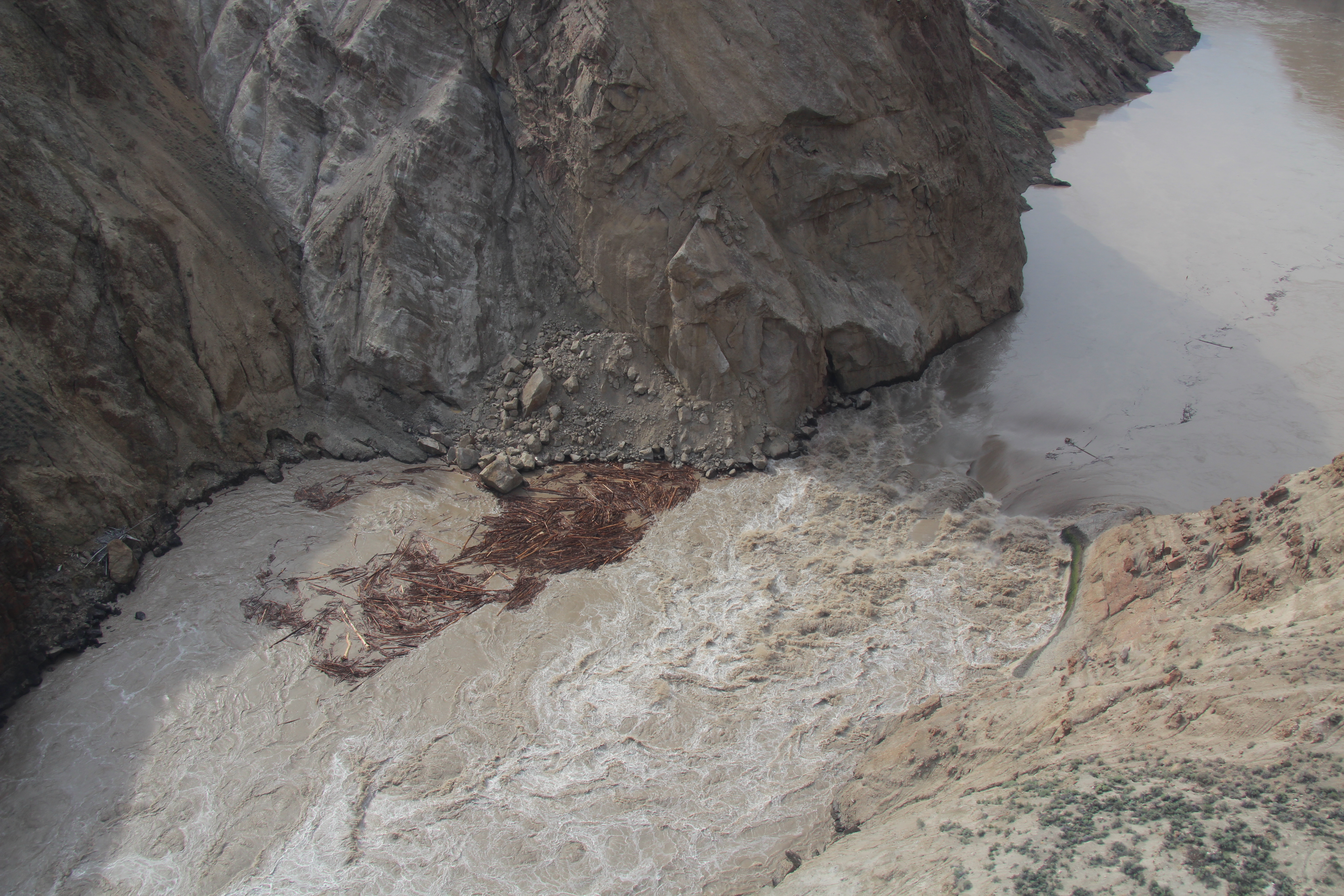
Fish-friendly Flows
Fish-friendly flow is a term used to describe flowing water (streams, rivers) that fish can swim through easily. Whether a body of water is “fish-friendly” depends on what structures have been set up on or near that body of water (such as a floodgate, dam, or well) and the volume and temperature of water flowing at any given time.
Factors such as availability of water, temperature, barriers (whether human-made or naturally occurring), presence of toxins or sediment all contribute to suitability for salmon and other fish and their ability to migrate and reproduce.
For example, in the summer of 2021, droughts and record-high temperatures reduced water flow in rivers like the Chemainus, Koksilah, and Squamish, leaving salmon fry trapped in disconnected pools of water too warm for them to survive in.
Salmon migration and spawning are significantly affected by higher water temperatures, occurring now more frequently due to climate change. When river, stream and lake water temperature is 19 degrees Celsius, salmon show early signs of stress and slowed migration. At 20 degrees, they have higher pre-spawn mortality and disease, and waters at 21 degrees can result in severe stress and early mortality.
Fish-Friendly Solutions on the Rise
While global efforts to prevent catastrophic climate change are underway, we cannot predict how successful they will be and how on-ground impacts will be felt in watersheds throughout B.C. As organizations, communities, and governments, however, we have a lot more control over removing and modifying human-made barriers to ensure fish-friendly flows. We can also continue to dedicate needed resources to restoration, where past damage to fish habitat and migration routes have occurred.
Organizations and decision-makers across the province are applying fish-friendly flow solutions in several ways. They range from less technical, such as a reinforced box with a wide pipe that runs through a beaver dam, to more technical, like replacing pump stations that ground up passing fish and ageing flood infrastructure that bar fish passage.
There’s good reason to make waterbodies more fish-friendly: our food security, culture, and ecosystems depend on wild salmon migration. Changing precipitation patterns, warming trends, and human-made barriers have led to the steep decline of wild salmon populations. A 2019 study published in the journal Conservation Letters found a 75 percent decline in sockeye salmon returns in the Skeena River over the last century. If we lose wild salmon, we’ll almost certainly face an ecosystem collapse.
To learn about Healthy Watersheds Initiative projects focused on fish-friendly flows, visit our projects page. (Note: projects tagged “fish-friendly flows” aren’t the only ones that apply this lens, so be sure to check them all out!)
To learn more about the wild salmon lifecycle and habitat needs, explore the websites of some of our Healthy Watersheds Initiative project partners:
SkeenaWild Conservation Trust: Education Resources
Watershed Watch Salmon Society: The Impacts of the Floods on Wild Salmon
Watershed Watch Salmon Society: Educational Resources
Upper Fraser Fisheries Conservation Alliance: Resources
Lower Fraser Fisheries Alliance
Fraser River Aboriginal Fisheries Secretariat: Big Bar Slide (First Nations Advisory Panel Member Gord Sterritt is also a member of Healthy Watersheds Initiative Indigenous Leaders Advisory Circle)
